TravelSurfing The Basque Country, By Bike

The events of the last two years changed a lot of things around the world. One of them was international travel. In the context of a deadly global pandemic the cancelling of surf trips through 2020 was minor, but travelling for waves is a core part of the surfing experience for many, and surf travel (a sub-industry in its own right) contributes to the livelihoods of many people around the world. Through 2020 and much of 2021 many surfers had to shift their mindsets to explore closer to home and make the most of what was on their doorstep, or within their own nation’s borders. Many found that it wasn’t actually so bad, and that sometimes there are more ways to enjoy and measure the success of a trip than by waves alone.
Some surfers have been operating like this for years, before the rest of the surf world was forced to take up their way of thinking. Now, with the world continuing to find its way through the COVID19 pandemic and many surfers taking or planning surf trips again, will “staycation” and alternative styles of surf trip retain their popularity?
Back in 2016, in a world BC (“before COVID”), two friends from the southwest of the UK with an equal passion for surfing and cycling undertook exactly the sort of surf trip that you wouldn’t want to rate based on surf success alone. They kitted their bikes out with trailers, strapped a surfboard across the top of each, and wheeled their steel steeds onto the ferry to Spain. 36 hours later they disembarked at the port at Santander, and set off in search of surf and place to pitch their tents. Sam and Nathan had a digital camera and a few single use film cameras stuffed into their panniers. They sweated up hills, camped in the woods, carried bottles of red wine in their water bottle cages, and generally had a great time. They did score fun waves, but it was about more than that. Here, Sam shares a few of their highlights:
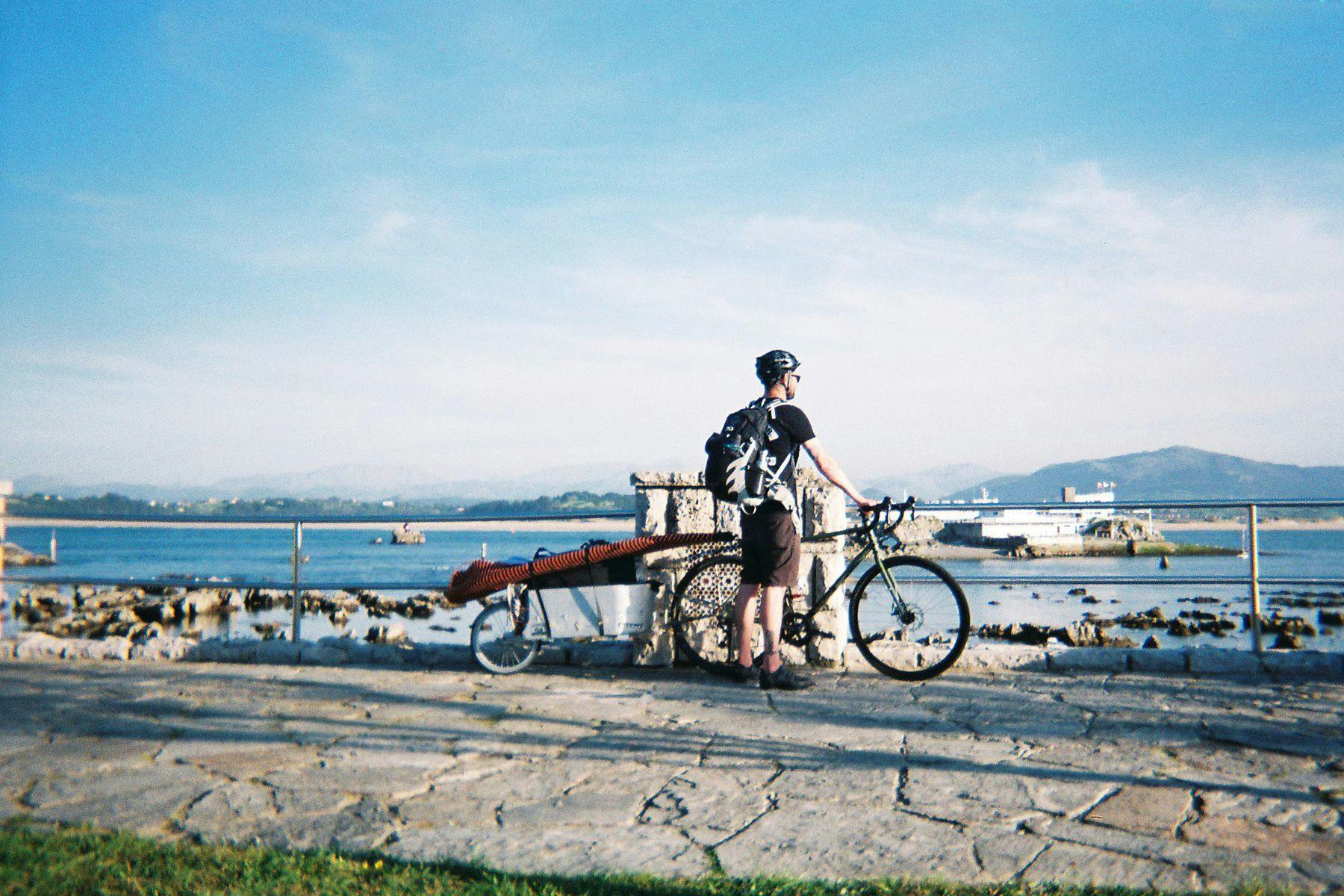
We made the first leg of the trip via ferry from Plymouth, not to far from our homes in Cornwall. The 22 hour crossing was beautifully calm and the fact that we had skimped on a cabin was negated by accompanying the Cetaceans Society who were doing some survey work aboard the ferry. We stayed on deck most of the journey and spotted minke, humpback and sperm whales alongside scores of dolphins and porpoise. It was actually a highlight of the trip – completely unexpected and perhaps more wonderful for it.
Booking the bikes on the ferry was super easy, although it was a source of constant amusement to people during the trip, especially ferry passengers from the UK. Cycling generally is so much less accepted in the UK and our strange human powered surf exploration vehicles did tend to turn heads.
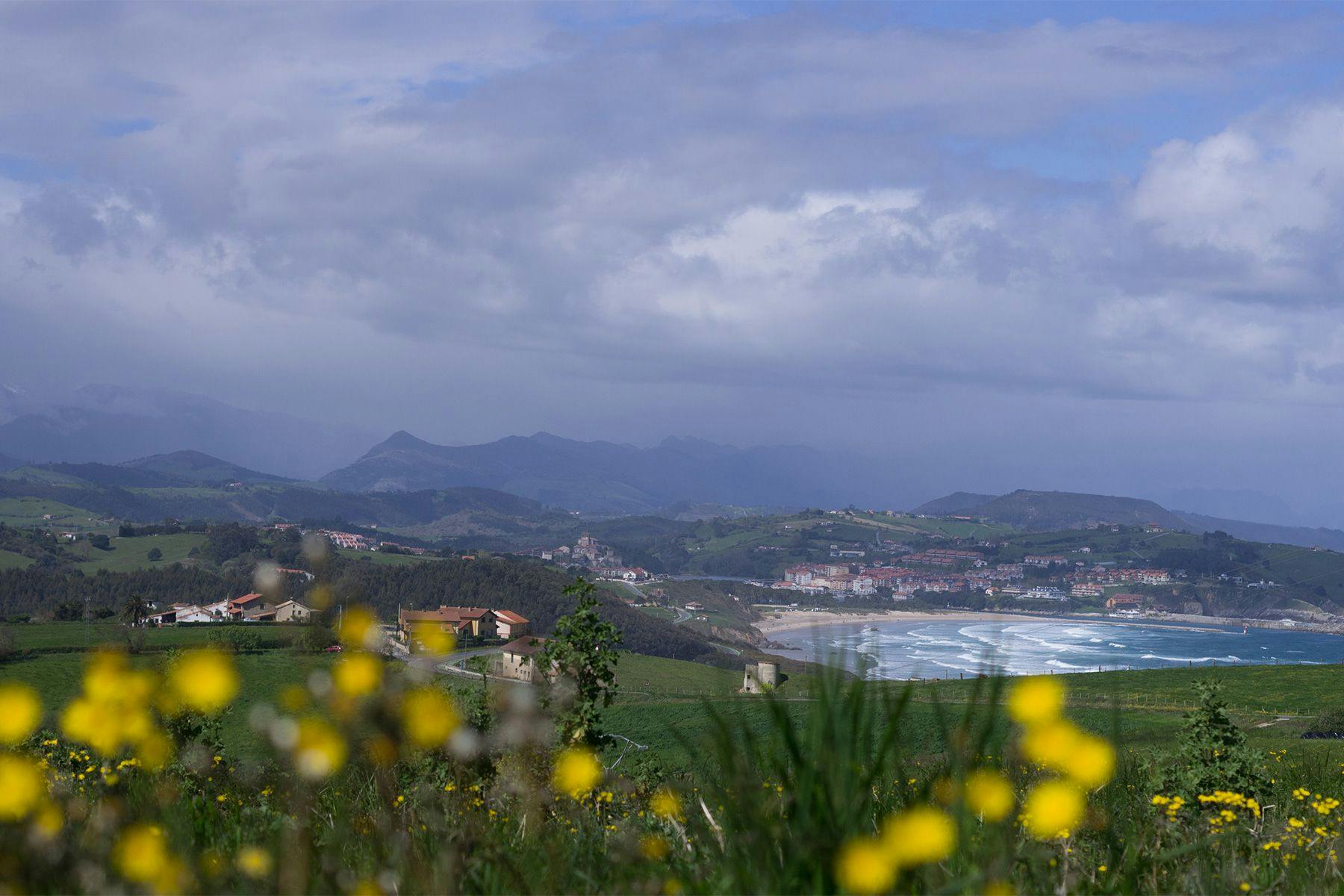
Although we stayed by the coast the hills were fairly punchy in places, but the roads were incredible! Miles of pretty much empty, super wide roads with huge margins and really polite and safe drivers; quite the contrast to cycling in the UK. And the best bit about those huge climbs… the descents were ace! Miles of high speed coasting on perfect tarmac. There were also loads of really nice gravel trails, although huge herds of very spiky cows made for some slightly hairy moments.
The beaches weren’t dissimilar to our home breaks in Cornwall: lots of sandy beaches and coves. These had snow-capped mountains in the background though! The mountains inland were something that we both wanted to go back and explore further, maybe another time without heavy trailers and surfboards in tow, mind.

This was actually the second dip of the morning on this day, before we decided to hit the road and head further west from our fist stop at Liencres. We had approached the trip with the attitude that if we scored good waves and good times at the first spot we got to, we had no pressure and could just stay for the entire 10 days. Waking up on the third morning to find the waves barely surfable, and yet massively rippy with incoming rainy weather, made us think that the time was right to move on. We were not wrong!
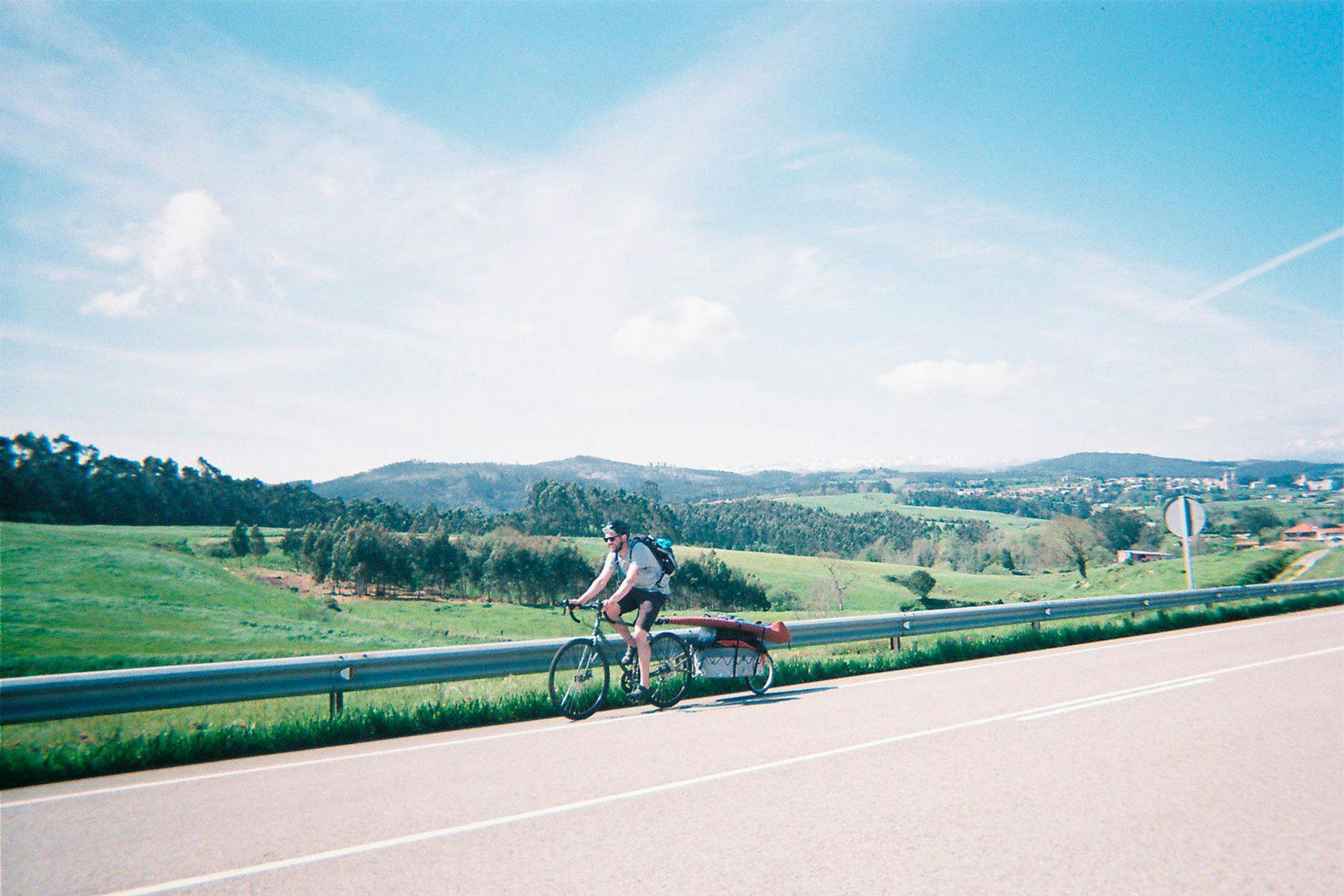
We learnt a fair bit about the reality of cycle-touring/bike-packing in this manner over the course of this trip; single wheel or twin wheel trailers both have their limitations and advantages when it comes to slow speed/high speed stability, the ease of hitching and leaning a loaded bike, and capability when tech off-road riding. We had honed our kit with a bunch of practice adventures in the UK prior to the trip and had it fairly sorted in terms of who was carrying what, so we didn’t replicate too much. That said, our trailers were both around the 45kg mark when loaded. That was a small tent and sleep kit each, stove, pans and plates (crucially a kettle, and some Yorkshire Tea) and to save carrying cafetière or Aeropress faff, we resolved to get coffee as and when we could from cafes, knowing that we would pass through some form of civilisation at least daily. One of the most important essentials was a good breakfast provided by porridge with chocolate melted in it. That kept us going long into a couple of days where that civilisation didn’t appear until lunchtime or later! We both selected foam boards especially for the trip, Nathan choosing the catch surf stump while I took a 5,8 softech Jake Levey. These worked great, were fairly light, and indestructible. We took 3/2 summer suits and, as it was fairly cold in the UK when we left, we took booties. We did not need booties. Although to be fair, that was about the only superfluous thing we ended up taking.
A huge shout should go to some of the tech that we took along. We purchased a 20,000mha battery pack and a BRILLIANT folding solar panel by ANKER. The solar panel was placed on the top of my surfboard on my trailer and this kept the battery-pack charged during the day, we then used it to charge phones when we stopped in the evening.
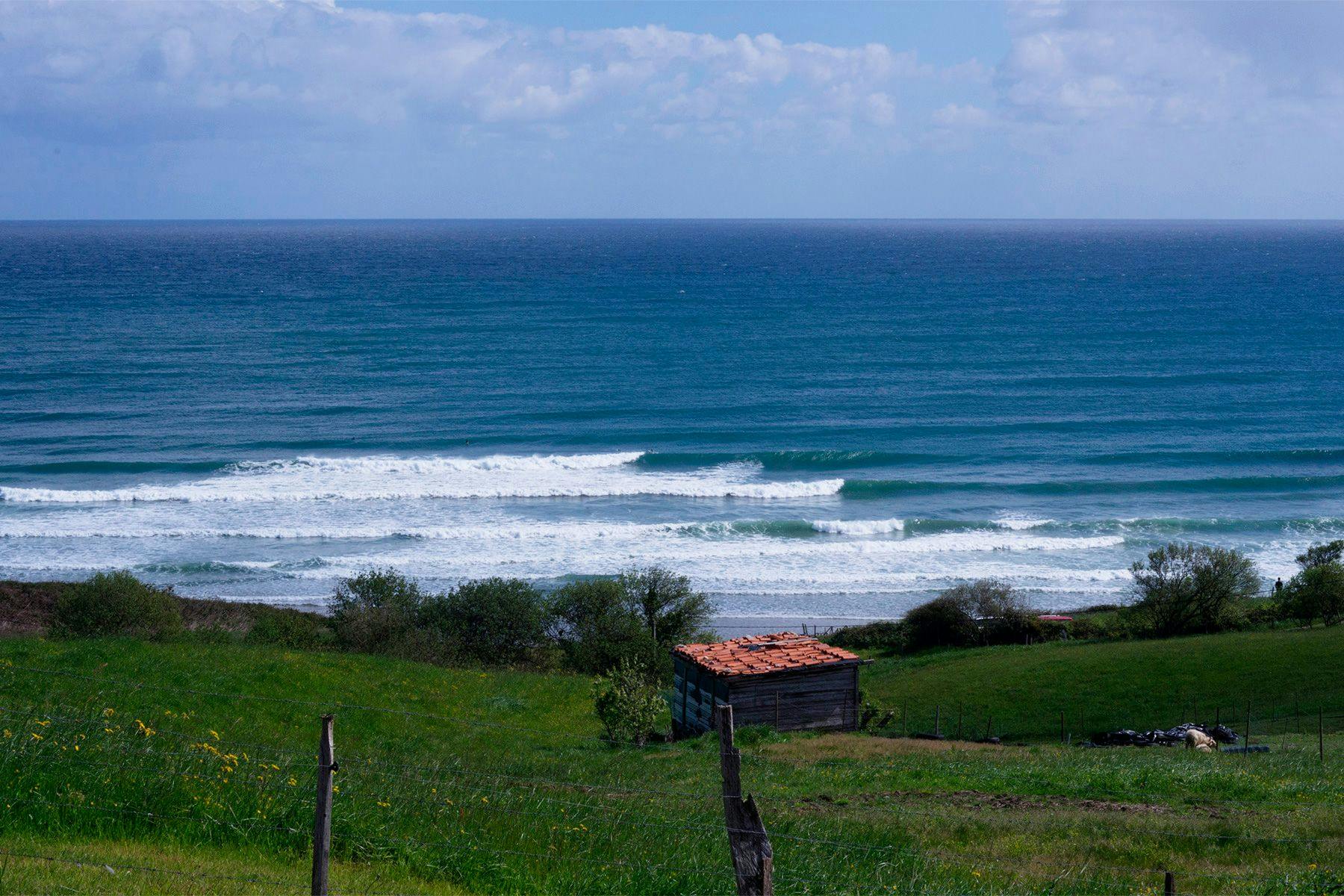
Wherever we did encounter other surfers we received the age-old “you should have been here last week/winter/four years ago”. We are both more than happy with sub-head-high surf. At our furthest point from Santander (Oyambre, less than 100 miles west of Santander) we woke up to some absolute gold! Shoulder high, clean, and empty! As it was the day we were due to begin heading back towards Santander, we surfed as much of the day as we could, stopping at three beaches on the way and getting cruisey shoulder-high beach breaks, ranging from long open & mellow to steeper and quite punchy in the smaller coves.
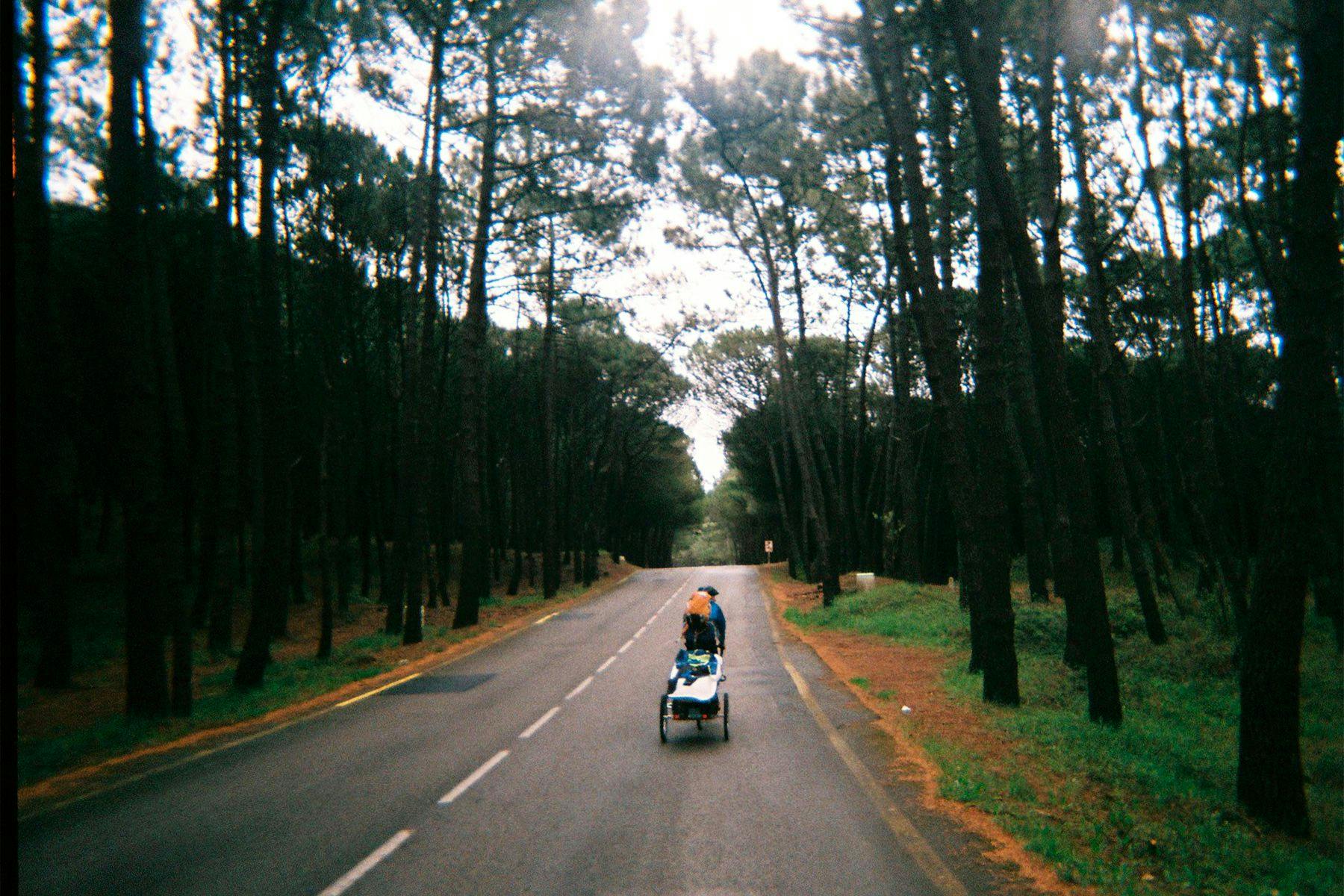
Struggle and physically ruinous goals are often fetishised in modern outdoor circles. Maybe we just weren’t masochistic about our adventure, maybe we just wanted to be on holiday rather than hit some difficulty or distance target, but to us, great riding, crystal clear surf, in quiet waters, with your best mate and snow capped mountains in the background should and will always be incredible. We got all of this in a place that if you flew and rented cars would be mere hours from where we live. After traveling the way we did, it felt like another world.
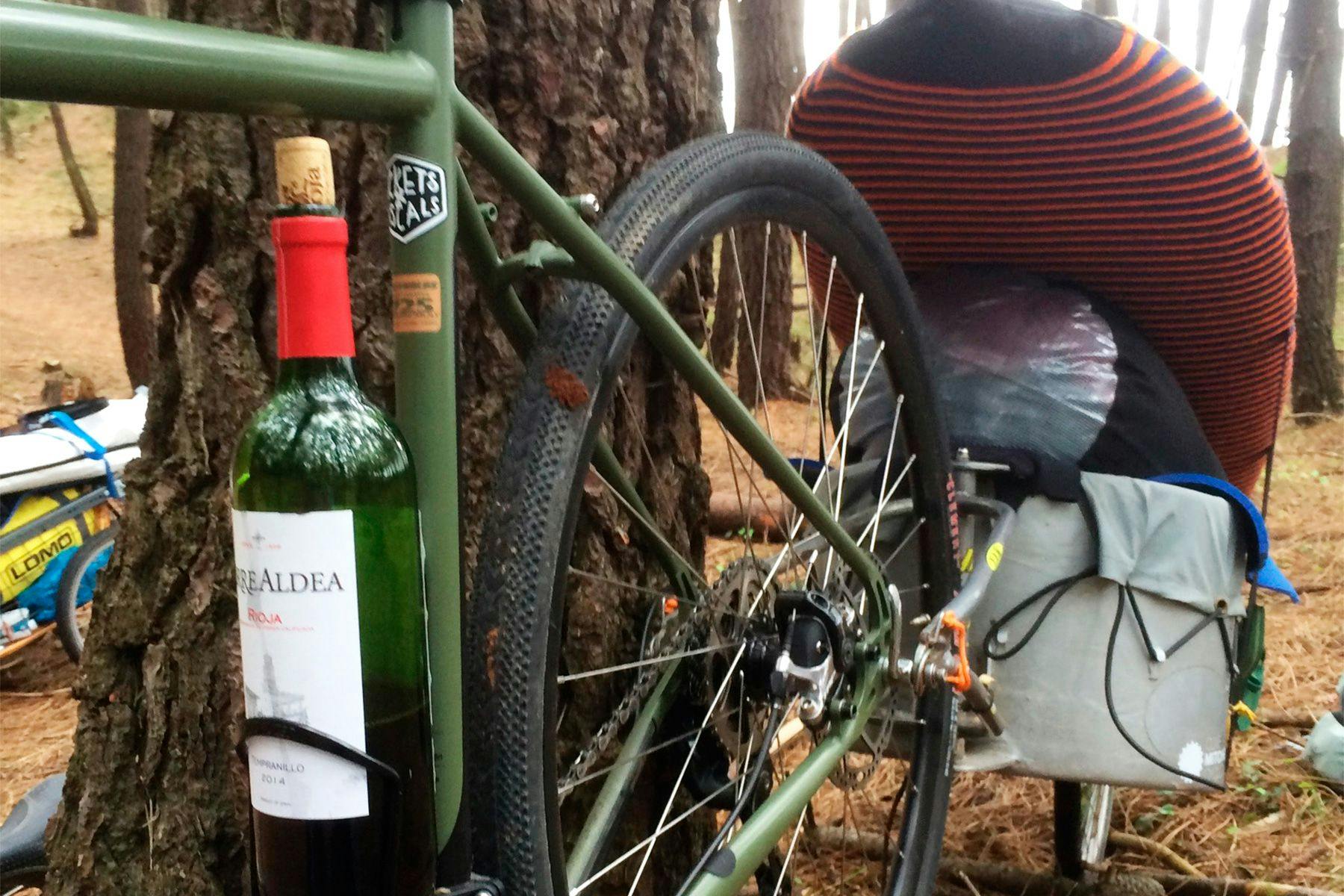
My bike and trailer in standard Spain spec. That’s what bottle cages are for right? I mean I keep water in my rucksack so what else would I put in there? I’m a huge red wine fan, so the availability of really tasty red for no money at all (like two euro per bottle) meant that a bottle of rioja soon replaced my regular water bottle in the second cage on this trip.
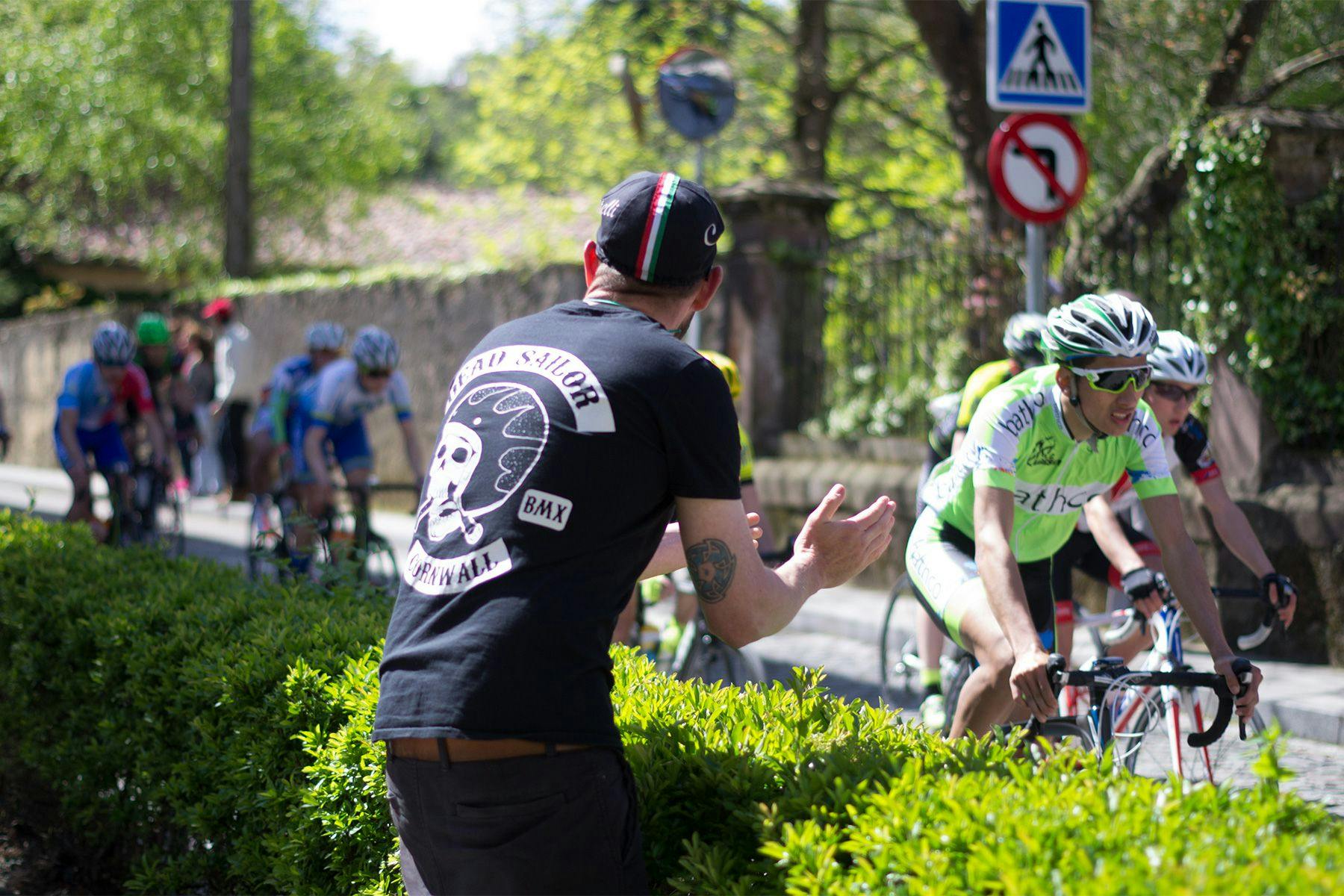
Whilst passing through the sleepy town of Camillas one Sunday morning on the search for coffee and pastry, we found ourselves riding down a wide town street with barriers and tape that I recognised as cycle race tape, adorned with sponsors names. The few people milling about the streets eyed us with a higher level of confusion than that which we had become accustomed to. It turned out that Sunday is Criterium day, as it is in cycling mad Euro countries all over the place. Criterium, or ‘crit’ racing is short course sprint road cycling generally raced in town centres. The racing is fast, furious and brilliant to watch. After escaping from what we later found out to be a racecourse, we took the only course of action open to us… we got some chocolate and churros, found a spot trackside and watched the session. Now, I’ve done a bit of Downhill MTB racing, some XC MTB and a few gravel races, but considering they were mostly weekend warriors or local shop teams these boys were some fast! Elbows out, no quarter given, PROPER!

After a particularly long and hilly day riding we reached the start of the long, sandy beach that stretches for about a mile west at Oyambre. We located a camp site that on initial inspection looked a little run down. The owner then lead us through a hole in the hedge to ‘the spare field’, which turned out to be at the top of the beach cliff, with our own showers, and set of steps to the totally deserted beach below. Our three days at Oyambre were the best of the trip. Empty and reasonably good waves. On the second day two lads from London showed up in a camper van. That was genuinely as busy as it got. The locals are obviously used to better and bigger things, and weren’t interested. Sometimes not having great expectations pays out, big time!
